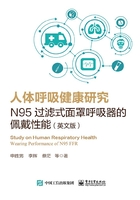
3.4 Conclusion
This chapter investigated the dynamic performance of particle rebound and statistically analysed the deposition/accumulation of particles on a fiber surface,including the CFD simulation of the flow field around a single fiber,and calculation of particle trajectory and deposition on the fiber surface using a self-developed solver in Fortran code.The trapping/rebound mechanism was investigated,and thus the filtration efficiency of a single fiber was compared with published results of existing particle trapping mechanisms.The acquired conclusions are:
(1) The normal critical velocity (Vin*) decreases with the increase of the particle diameter.So larger particles are more likely to rebound from the solid surface and escape away.
(2) For soft PSL particles and the polished quartz fiber,the velocity ratio of the normal reflect velocity (Vrn) to the normal incident velocity (Vin) for particle-particle collisions is smaller than that for particle-fiber collisions at a given Vin,due to a larger plastic deformation and more energy loss.
(3) The particle rebound is one of essential particle behaviors.Its effects on the particle trajectory and deposition are significantly related to the face velocity and particle diameter.The percentages of the adhered particles are 8.5%,28.5%,11.5%and 2.5%when the face velocities are 0.5 m/s,2.0 m/s,3.0 m/s and 4.0 m/s,respectively.And,the percentages of the adhered particles are 12.0%,6.5%,29.0%and 17.5%when the diameters of particles are 0.1 µm,1.0 µm,1.8 µm and 2.4 µm,respectively.
(4) Considering the particle rebound and accumulation,the filtration efficiency of a single fiber is obviously different with those of existing particle trapping mechanisms,especially for large particles (above 1.8μm in this work).